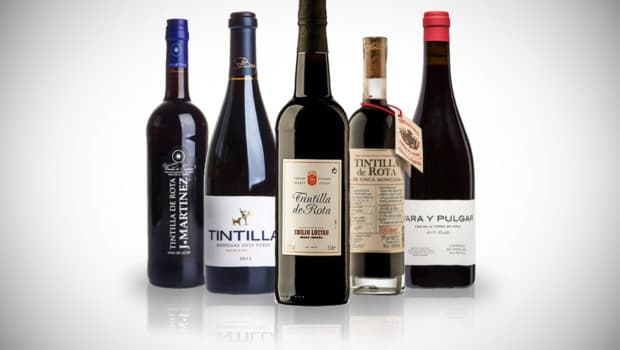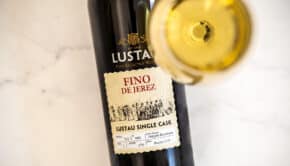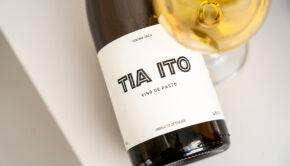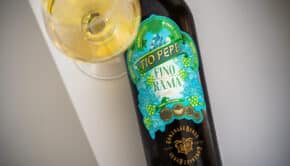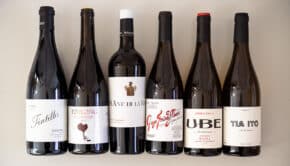Tintilla de Rota
Tintilla de Rota is an autoctonous blue grape that is native to the sherry region: Rota is a coastal town between Sanlúcar and El Puerto, famous for the wine with the same name and for its US naval base and airport. This in fact is one of the reasons why so many vineyards had to disappear and why the wines are now so rare.
The Tintilla grape
The low-yield vines produce small, round grapes with a very dark skin and a fairly high acidity. It is genetically identical to the Graciano grape that is found in Australia, France and Argentina as well as in Rioja, where it is believed to have originated (many sources will claim Tintilla is only related to Graciano, but since 2001 there is evidence that they are in fact identical). In Andalucía, Tintilla has been present for at least 500 years (that’s longer than the records in Rioja) and the wines were quite popular in the 19th and early 20th century, especially in the UK, but given its low yields and currently its modest fame outside of the region, production is limited so it is notoriously hard to find.
The terroir of Rota revolves around sandy, poor soils (arenas). It makes the vines root very deeply, until they reach the clay underneath the sand. This is why Tintilla grapes in the sherry region have not been affected by Phylloxera.

Tintilla de Rota grapes
Tintilla wine styles
Different types of wines can be produced from this grape of course, but traditionally Tintilla de Rota is started by harvesting the grapes late, and usually with a few days of soleo (drying the grapes in the sun). Wine alcohol is added to fortify the fermented must (thus producing a vino de licor) and it can be coloured and sweetened through the addition of arrope, a syrup made from must that is cooked and concentrated to around 20% of its original volume. It is then aged in barrels, often in a solera, similar to the production of sherry.
Tintilla is not officially a sherry wine though, as the D.O. Jerez-Xéres-Sherry only allows its wines to be made of Palomino, Pedro Ximénez or Moscatel grapes. Taste-wise this classic type of Tintilla de Rota is roughly in between a Ruby Port and a Pedro Ximénez wine, some examples being closer to the first and others closer to the latter.
Recently a few good table wines have appeared, Tintilla wines that have not been fortified. You could even say the grape is making a (modest) comeback, in a different, more modern form.
Tintilla de Rota producers
The list of Tintilla producers is very short. Bodegas El Gato (website) is probably the oldest producer, and the only one still operating in the town of Rota. Its wine is named J. Martinez. Lustau produces a fortified Tintilla de Rota, but only occasionally, or so it seems. González Byass recently also started producing a classic fortified Tintilla at Finca Moncloa. Bodegas Ferris, near Rota but closer to Sanlúcar, is another small producer.
Modern unfortified Tintilla table wines are produced by Bodegas Luis Pérez, Bodega Forlong, Ramiro Ibáñez, Bodegas El Gato again, Vinos del Atlántico (Atlántida and Vara y pulgar) and a few others.
Tintilla de Rota may be extremely limited and difficult to find, but its profile is rather unique and deeply rooted in the Cádiz region, so make sure you try it if you have a chance!


